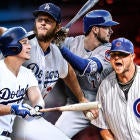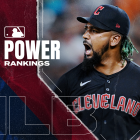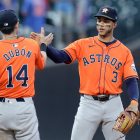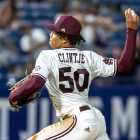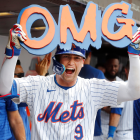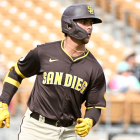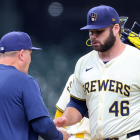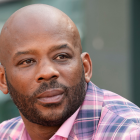A Cy Young-winning ace in his prime. A Rookie of the Year-winning, world-beating infielder about to win a bunch more hardware in the years to come. A Manager of the Year-winning skipper liked and respected by everyone in the organization. A front office loaded with forward-thinking minds who value both present and future success. A passel of young talent poised to fortify the major-league roster for years to come. An old but beloved ballpark. A fan base pining for success after a long October drought.
The Los Angeles Dodgers resemble the Chicago Cubs in more ways than you can count. All that's left is a World Series. They might now have the horses to do it.
On Monday, the Dodgers traded young right-hander Jose De Leon to the Tampa Bay Rays for second baseman Logan Forsythe. While not a blockbuster deal, the swap still showed how L.A.'s brass approaches roster construction. It also reminded us that the organization's cupboard of prospects is loaded, a great sign for a team vying for sustained success.
Forsythe enjoyed a breakout season in 2015, batting .281/.359/.444 while playing half his games at pitcher-friendly Tropicana Field -- numbers that worked out to 25 percent better than league average, per the park-adjusted metric wRC+. His numbers ebbed slightly in 2016 to .264/.333/.444 -- still 13 percent better than league average. Forsythe also socked a career-high 20 homers in just 127 games while playing slightly better-than-average defense for the third year in a row, per Baseball Info Solutions' Defensive Runs Saved.
A better-than-average offensive player who's just 30 years old and locked up for the next two seasons for the relatively tiny price of $14.75 million (up to $16.75 million if he meets certain playing time-based incentives) represents a huge asset for the Dodgers. Add the team's glaring need at second base and a lefty-heavy lineup that needed a jolt of right-handed balance, and Forsythe's acquisition checks all the boxes.

Some pundits have wondered aloud why the Dodgers didn't nab Twins second baseman Brian Dozier instead. It's a fair question, given that Dozier blasted 42 homers last season, emerging as one of the best players in the American League. Consider that the Dodgers came up just two games short of making the World Series last season, and you would think that going after the best player possible would be the no-brainer way to go.
Two factors pushed the Dodgers toward Forsythe instead. First, Dozier's 42-homer explosion marked a massive spike from previous production levels. Which means it's tough to tell if those kinds of numbers will become typical for him, or if we might look back at that season a bit like we did at, say, Brady Anderson's 1996 season or Davey Johnson's 1973 campaign -- a good player having one random, all-world season at his peak.
Second, the Twins' asking price for Dozier was reportedly sky-high, with De Leon just one of several prospects Minnesota was demanding in return. The Dodgers refusing to stretch for Dozier continues their recent tradition of not overextending for players who might fill their needs.
After the 2015 season, the Dodgers had a glaring need for starting pitchers to complement Clayton Kershaw. But rather than spend $200 million-plus to re-sign Zack Greinke (or sign David Price), they shopped in the discount aisle, snagging Kenta Maeda and Scott Kazmir instead. Though Kazmir struggled with injuries and erratic performance, the combined investment in those two pitchers was about one-third of what Greinke and Price got on the open market, with Maeda posting numbers that topped Greinke's and weren't too far from what Price accomplished in Boston.
This offseason, with starting pitching again a need, the Dodgers could have strip-mined their farm system, the way the Red Sox did when they acquired Chris Sale. They opted to re-sign veteran lefty Rich Hill to an affordable three-year deal instead, avoiding the talent exodus that Boston oversaw in the Sale deal, and that the Nationals went for in acquiring Adam Eaton.

All of that is by design. As Dodgers general manager Farhan Zaidi explained in detail last spring, the large-market Dodgers and their bottomless-pit-of-insurance-money owners want to win now. But they also want to win for many years to come. As Zaidi explained, the best way to accomplish those twin goals is through a combination of data, depth and youth.
There will be no shortage of data crunching in Los Angeles this year, with a front office featuring four past or present analytically inclined GMs (Zaidi, team president Andrew Friedman, as well as Josh Byrnes and Alex Anthopoulos) running the show. Manager of the Year Dave Roberts leads an open-minded coaching staff that includes spectacularly well-prepared pitching coach Rick Honeycutt.
By acquiring Forsythe, and re-signing Hill, Justin Turner and Kenley Jansen, the Dodgers now project as one of the deepest teams in baseball. Six f the Dodgers' eight projected lineup regulars, all five projected starting pitchers and the team's closer all project as better-than-average players this season. Lefty phenom Julio Urias is on everyone's list of best breakout candidates of 2017. The outfield is loaded with timeshare options that could help the corner-outfield spots become more productive than they were last season. It's possible that the team's worst everyday player will be Adrian Gonzalez, a five-time All-Star who still put up numbers 12 percent better than league average in 2016.
The bullpen beyond Jansen could use reinforcements, and middle relief has been an issue for the Dodgers for the past few years. But Hot Stove season isn't over, and non-star relievers rank among the cheapest and easiest assets for any team to pick up.
The organization's youth might be its biggest asset of all. Corey Seager, 22, is a franchise player on a team that already had one in Kershaw. He's joined by Yasmani Grandal, 28, and Joc Pederson, 24, both near-elite up-the-middle players in or entering their prime, as well as a trio of excellent, under-30 starting pitchers in Maeda, Urias and the indomitable Kershaw.

Further, by resisting the urge to sacrifice top prospects in trade or top draft picks on iffy free-agent signings, the Dodgers have built a farm system that remains strong even with De Leon moving on to St. Pete. Slugger Cody Bellinger, 21, could crack the majors this season and could be ready to take Gonzalez's job in a hurry. Cuban right-hander Yadier Alvarez, 20, has just 59 professional innings under his belt, but also has the talent to rise quickly through the minors, following Urias as the next potential big-time Dodgers pitching prospect to crack the rotation. Outfielder Alex Verdugo, 20, offers additional promise for the future, with Yasiel Puig, Andre Ethier and Andrew Toles all unlikely to be strong long-term answers.
On top of all that, the Dodgers have the kind of money that allows them to overcome mistakes. The team's $62.5 million signing of Hector Olivera just 22 months ago would go down as a nuclear disaster for a small-revenue club like the Rays or A's. In L.A., it's a blunder no one even talks about, because the Dodgers have more than enough scratch to realize mistakes, then spend a ton to make them disappear.
With a cautious approach that allows them to dodge the really huge albatrosses like Arizona's Greinke deal, they're left with enough flexibility to re-sign key players like Hill, Turner and Jansen. With the last remnants of massive spending by the previous regime (chiefly Gonzalez and Carl Crawford) disappearing in the next year or two, even a slide below the luxury-tax threshold (and a windfall of tens of millions in penalty savings for the team's owners) could eventually be in play.
The kicker to all this is how the Dodgers stack up for 2017. Fiscal discipline and hypothetical prospects contributing years from now might not thrill Dodgers fans who haven't experienced a World Series parade in nearly three decades. For those title-starved die-hards, there's this: With three weeks to go until pitchers and catchers report, Fangraphs pegs the defending champion Cubs as the second-best team in baseball. The best? Your 2017 Los Angeles Dodgers.
With all that these two teams have in common, we might see the Dodgers and Cubs collide in the playoffs multiple times in the next few years. As other traditional powers regroup, L.A. vs. Chicago could become the best rivalry in baseball.









